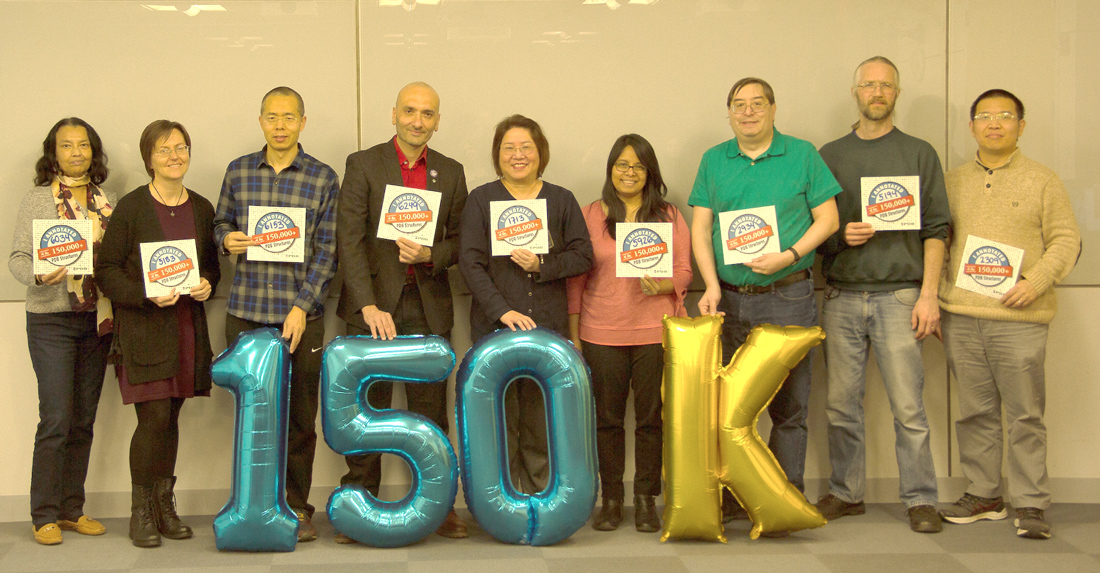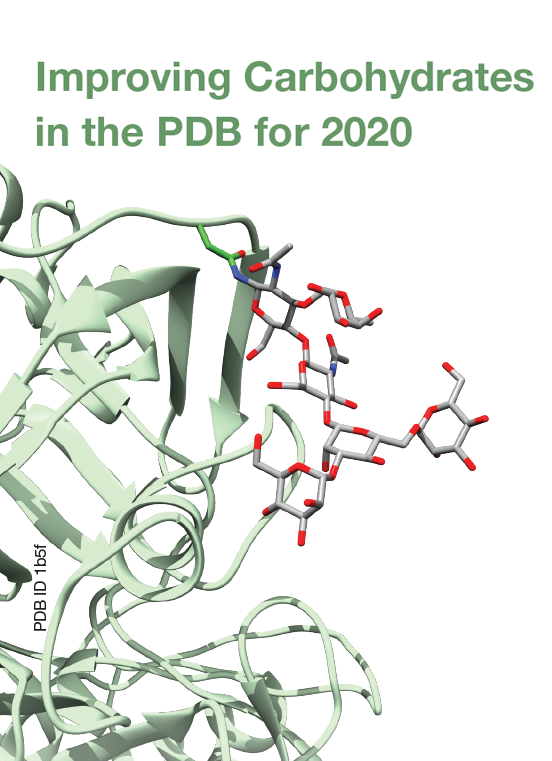Data Deposition/Biocuration Services and Archive Management
Deposition Statistics
In the second quarter of 2020, 4035 experimentally-determined structures were deposited to the archive. Data are processed by wwPDB partners RCSB PDB, PDBe, and PDBj.
82.2% were deposited with a release status of hold until publication; 13.0% were released as soon as annotation of the entry was complete; and 4.8% were held until a particular date. 80.9% of these entries were determined by X-ray crystallographic methods; 2.6% by NMR methods; and 16.4% by 3DEM.
During the same period, 3625 structures and 1005 EMDB maps were released in the PDB.
Improving Carbohydrates in the PDB
At the end of July 2020, wwPDB will roll out updated PDB structures and reference data files with standardized representation of carbohydrate molecules, improving the Findability and Interoperability of PDB data.Carbohydrates are found in ~10% of the PDB archive. For this remediation effort, the wwPDB will offer
- Standardized Chemical Component Dictionary descriptions
- Carbohydrate nomenclature following IUPAC-IUBMB recommendations
- Uniform representation for oligosaccharides
- Glycoscience-community naming conventions
- Identification, validation, and biocuration of glycosylation sites in PDB structures using community tools
Additional details will be announced at wwpdb.org and on the wwPDB Carbohydrate Remediation site.
Changes made to entries during versioning are considered to be either major or minor. Updates to atomic coordinates, polymer sequence, or chemical description trigger a major version increment, while changes to any other categories are classified as minor. Changes introduced are recorded in the PDBx/mmCIF audit categories.
Biocuration: On the Front Line of Structural Biology
As they work from home during the COVID-19 pandemic, the RCSB PDB Biocuration Team reflects on the privilege and responsibility of being a biocurator.
Our diverse RCSB PDB biocuration team represents advanced training in X-ray crystallography, NMR spectrometry, and 3DEM. Collectively, we have expertise in biochemistry, biophysics, computational chemistry, enzymology, and small molecule crystallography.
We biocurators see ourselves at the very front line of structural biology. Our job is to ensure the quality of the data in the PDB archive. As partners in the Worldwide Protein Data Bank, we are responsible for reviewing structure quality, standardizing format, and adding the metadata annotations that enable research by our PDB users. Biocurators are the connection between the scientists who submit PDB structures and the public who appreciate them. Our ultimate goal is to support research, training, and education worldwide and facilitate public awareness and understanding of these scientific discoveries.
Together with our collaborators at PDBe and PDBj, the RCSB PDB Biocuration team has reviewed, annotated, and released many milestone structures.
In 2008, we celebrated the Nobel Prize for green fluorescent protein. Dozens of new GFP and GFP-like PDB structures are deposited and annotated each year. |
 |
2008 Nobel Prize in Chemistry: Shimomura, Chalfie and Tsien for the discovery and development of GFP. |
In 2009, the Nobel Prize for ribosome structures reminded biocurators of the importance of reviewing each of the many chains of the ribosomal RNA and its associated ribosomal proteins. |
 |
2009 Nobel Prize in Chemistry: Ramakrishnan, Steitz, and Yonath for studies of the structure and function of the ribosome |
When we received the first XFEL structure 3pcq in 2010, we were astonished to see that more than 15,000 crystals were involved. This motivated the team to learn more about this technique and to improve our deposition system to capture statistics unique to the method. |
 |
|
In 2012, we celebrated the Nobel Prize for G Protein-Coupled Receptors (GPCR). GPCRs are a large family of membrane-embedded receptors, with structural features that have been preserved through the course of evolution. GPCRs are at the center of signaling pathways that control all manner of essential processes, ranging from vision to carcinogenesis, and thus are important targets for therapeutic intervention. |
 |
2012 Nobel Prize in Chemistry: Lefkowitz and Kobilka for studies of GPCRs |
In 2013, we received the structure of the HIV-1 capsid (3j3q), the structure containing the most atoms (over 2.4 million) ever deposited, and it was so large days were required for the team to process. |
 |
|
In 2016, we watched as Dr. Michael Rossmann announced the release of the first structure of the Zika virus (PDB structure 5ire) as it was plaguing South American nations. This 3DEM structure inspired the creation of a painting, a paper model, and other materials available at PDB-101. |
 |
2012 Nobel Prize in Chemistry: Lefkowitz and Kobilka for studies of GPCRs |
In January 2020, just days after 10 million people in Wuhan City were quarantined, we received the structure deposition of the COVID-19 main protease, and worked rapidly to enable public access to this structure of a potential drug target. Since then, more than 150 SARS-CoV-2 structures have been deposited and carefully curated by biocurators around the world. Biocuration of these structures are a priority, as they are being used to develop new drugs and new approaches to creating vaccines to fight coronaviruses. |
NJTV News spoke with biocurator Brian Hudson about the release of PDB structure 6lu7 |
|
We are biocurators with both sense and sensibility–we have a passion for structural biology and honor the responsibility of our role. Macromolecular structures are exquisite in their utility and intricacy, and we appreciate the privilege of our early access to their biological stories. We admire both the artistry of nature and the creativity and persistence of the scientists who have observed and recorded these structures over the nearly fifty years of PDB archiving. Biocuration is a vocation that requires knowledge, propriety, thoughtfulness, and carefulness, but most importantly it requires respect for data. It is a pleasure to work with our depositor community, and to share their work with the world.
We don’t know how Science will evolve in the years to come, but we are certain that it will be exciting, that there will be more scientific data to curate, and that we are going to do our best to serve the community.


